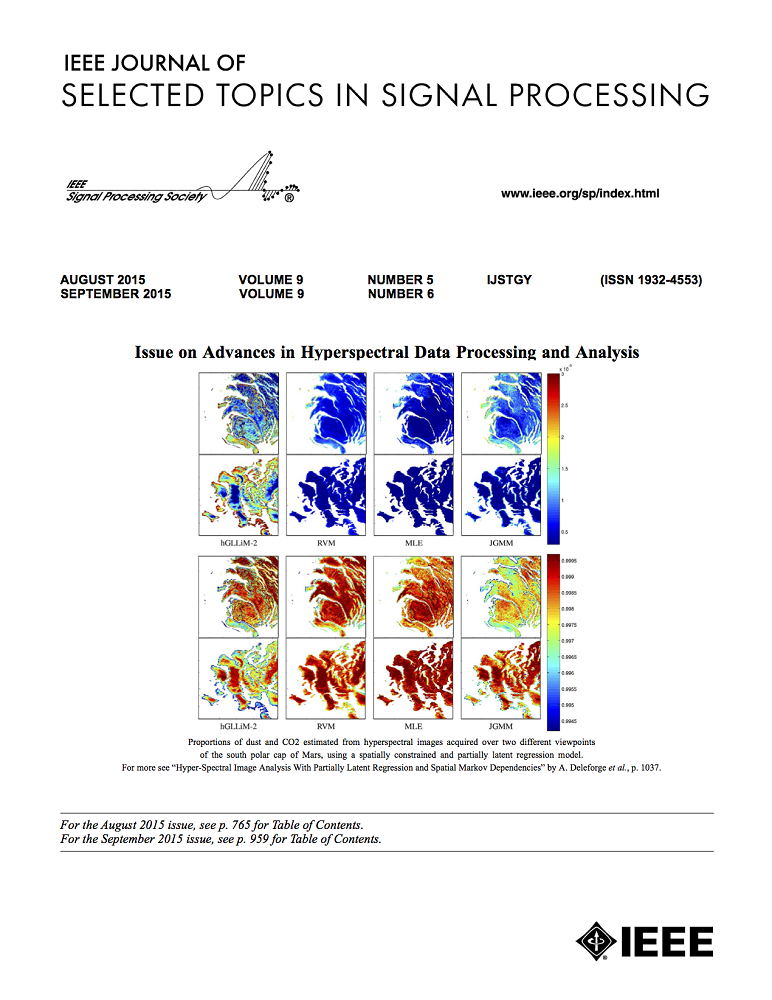通过非凸公式和相位掩码设计实现深度未卷积单快照相位检索
IF 8.7
1区 工程技术
Q1 ENGINEERING, ELECTRICAL & ELECTRONIC
IEEE Journal of Selected Topics in Signal Processing
Pub Date : 2024-03-06
DOI:10.1109/JSTSP.2024.3395979
引用次数: 0
摘要
相位检索(PR)包括从捕获的强度测量值(称为编码衍射图样(CDP))中恢复相位信息。解决相位检索问题的非凸算法需要适当的初始化,并通过梯度下降方法加以完善。事实证明,这些 PR 算法在不同情况下都很稳健。尽管深度模型在这一领域取得了令人惊喜的成果,但这些方法的神经架构缺乏可解释性。本研究提出了基于非凸表述的近场模型,针对 PR 问题展开初始化和迭代重建算法;从而产生了一种可解释的深度神经网络(DNN),可以端到端(E2E)的方式进行训练。此外,所提出的方法还能共同优化 CDP 采集的相位掩码和 DNN 参数。仿真结果表明,所提出的 E2E 方法能利用从单一投影中学习到的相位掩码提供高质量的重建。此外,还在实验光学装置上测试了所提出的方法,该装置通过单相空间光调制器整合了所学相位掩码。本文章由计算机程序翻译,如有差异,请以英文原文为准。
Deep Unrolled Single Snapshot Phase Retrieval via Non-Convex Formulation and Phase Mask Design
Phase retrieval (PR) consists of recovering the phase information from captured intensity measurements, known as coded diffraction patterns (CDPs). Non-convex algorithms for addressing the PR problem require a proper initialization that is refined through a gradient descent approach. These PR algorithms have proven to be robust for different scenarios. Despite deep models showing surprising results in this area, these approaches lack interpretability in their neural architectures. This work proposes unrolling the initialization and iterative reconstruction algorithm for the PR problem using the near-field model based on a non-convex formulation; resulting in an interpretable deep neural network (DNN) that can be trained in an end-to-end (E2E) manner. Furthermore, the proposed method can jointly optimize the phase mask for the CDP acquisition and the DNN parameters. Simulation results demonstrate that the proposed E2E method provides high-quality reconstruction using a learned phase mask from a single projection. Also, the proposed method is tested over an experimental optical setup that incorporates the learned phase mask via an only-phase spatial light modulator.
求助全文
通过发布文献求助,成功后即可免费获取论文全文。
去求助
来源期刊

IEEE Journal of Selected Topics in Signal Processing
工程技术-工程:电子与电气
CiteScore
19.00
自引率
1.30%
发文量
135
审稿时长
3 months
期刊介绍:
The IEEE Journal of Selected Topics in Signal Processing (JSTSP) focuses on the Field of Interest of the IEEE Signal Processing Society, which encompasses the theory and application of various signal processing techniques. These techniques include filtering, coding, transmitting, estimating, detecting, analyzing, recognizing, synthesizing, recording, and reproducing signals using digital or analog devices. The term "signal" covers a wide range of data types, including audio, video, speech, image, communication, geophysical, sonar, radar, medical, musical, and others.
The journal format allows for in-depth exploration of signal processing topics, enabling the Society to cover both established and emerging areas. This includes interdisciplinary fields such as biomedical engineering and language processing, as well as areas not traditionally associated with engineering.
 求助内容:
求助内容: 应助结果提醒方式:
应助结果提醒方式:


